#šiška
Explore tagged Tumblr posts
Text


Hlavně ať vám do očí nespadne šiška!!
Co se dá dělat když liška zakousla husu.
Pokud to použijete dejte mi prosím vědět, jak jste s tím dopadly 😳😳 zatím jediný můj ohlas je 9 mrtvých z 10.
#enemies to lovers#love triangle#šiška x liška#snad vám taky nepadne do oka#česky#č#czech#obrození#hezky česky#obrozujeme#čumblr#čumlbr
63 notes
·
View notes
Text

Baby Lasagna, Kino Šiška 17.09.2024
Source: Fotosmialek on IG
18 notes
·
View notes
Text
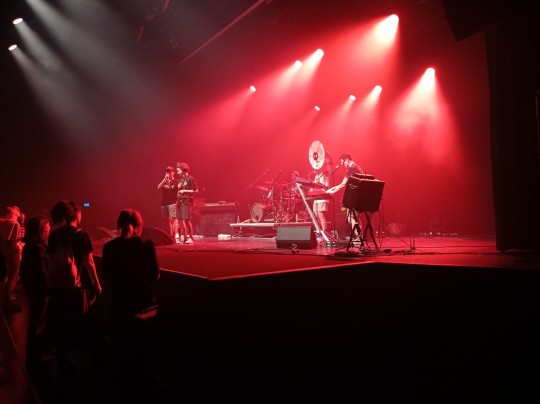
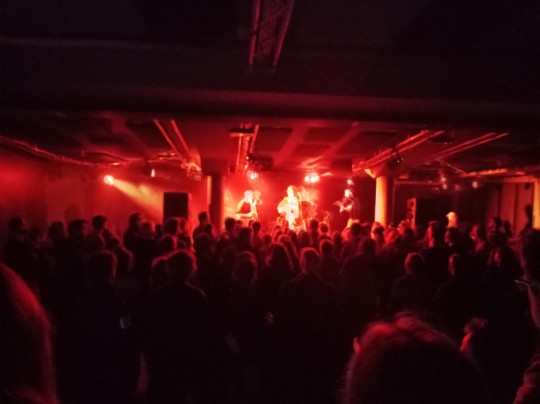

5 notes
·
View notes
Text
Anna B Savage Interview: Curated Vulnerability
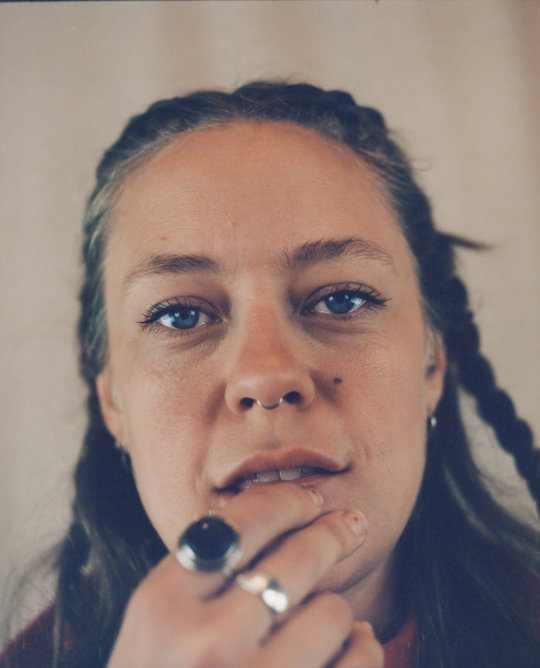
BY JORDAN MAINZER
Over a Zoom call with Anna B Savage in March, I tell her that “Say My Name”, an acoustic, whispered, creaking highlight from her sophomore album in|FLUX (City Slang), reminds me of Radiohead’s “Street Spirit (Fade Out)”. Like that song, “Say My Name”, pattering drums and free saxophone nonetheless, is essentially a song-long crescendo. The first time Savage recorded the song, she burst into tears when finished. I tell her the story of how Thom Yorke did the same, a night after seeing Jeff Buckley and laying “Street Spirit” down to tape, but that I could be wrong. “No way! I’ll choose to believe the legend,” Savage said. Immediately after our conversation, I realize I did get it wrong--not the crying part, but the specific song. (Purportedly, the Buckley-to-recording-to-weeping pipeline happened with “Fake Plastic Trees”.) In a way, my error felt fitting when talking about in|FLUX, an album that saw Savage learning to not worry about, and ultimately embrace, uncertainty and imperfection.
While the themes of in|FLUX jive with Savage’s previous material, there’s a newfound openness to her approach. The dissolved relationship blues of Savage’s debut A Common Turn and subsequent ups and downs of her These Dreams EP presented a stunning new artistic voice, one unafraid to share her deepest insecurities, buoyed by details at once hilarious and cringeworthy. in|FLUX is more all-encompassing. She still explicitly refers to sex and sexuality, on tracks like the “Touch Me”, “Pavlov’s Dog”, and the title track, but she ranges from desire to self-sufficiency. She revels in the foreplay on “Touch Me”. “Just call me Pavlov’s Dog / I’m here, I’m waiting, I’m salivating,” she sings on the jazzy “Pavlov’s Dog”, literally panting in the background. On the title track, she recalls, “Last night I dreamt we were one / We had sex / I didn’t come,” a blunt, straightforward contrast to erotic songwriting. Beginning with voice and woodwinds, stop-starts of silence, the song transforms into a dance track with Moog synthesizer filling the spaces in between. “I want to be alone,” Savage sings, dancing on her own. It’s one of many aesthetic about-faces on in|FLUX.
in|FLUX was co-produced with tunng’s Mike Lindsay, introduced to Savage through City Slang, and the album was built up methodically, flushed out in the studio on a week by week basis. Though Lindsay certainly got to know Savage and encouraged her therapeutic songwriting, her ability to push herself made the record what it is. During the pandemic, she pursued a Master’s in Music and requested her mentor to force her to write a song on a Digital Audio Workstation, which ended up being the title track. The saxophone and clarinet that pepper the album were played by Savage herself, choosing to throw caution to the wind and pick up instruments she hadn’t played since her teenage years. She sung final track “The Orange” in the wrong key but ended up keeping it, turning a mistake into an artistic choice. “It’s a small miracle to finally enjoy being me,” she sings, “And if this is all that there is / I think I’m gonna be fine.” in|FLUX seems to be a touchpoint for Savage’s musical career, one where she’s less concerned about defining herself than being herself.
Read our conversation below, edited for length and clarity.
Since I Left You: At what point did you realize the writing process for in|FLUX needed to be more stream-of-consciousness?
Anna B Savage: I don’t really see it as a stream-of-consciousness thing. It was definitely easier than [A Common Turn], which makes it feel like it could have been stream-of-consciousness, but annoyingly, I probably made it a bit harder than I needed to on myself, going in and reworking it at times, wanting the right things to come to the foreground. I wanted it to be looser, and I didn’t want it to take me as long. Some of the songs on A Common Turn took me 2-3 years of rehashing and reiterating. I wanted this to be a speedier process. But they’re--and me and my therapist joke about this--curated, but vulnerable. I get to choose what people see and hear.
SILY: You hadn’t necessarily finished writing the songs before going into the studio with Mike, though, right?
ABS: That’s correct. It was a quick process, but I’d go in for a week, and go away for a week, working on all the songs myself before going back in with Mike. So it was definitely not an easy process, but much easier than the first one.
SILY: At what point did you pull out the clarinet and saxophone you hadn’t touched in forever?
ABS: [laughs] Mike and I, when we talked about doing the record--we hadn’t even tried working together yet--he asked, “What kind of things do you think you want [on the record]?” and I tossed out I wanted some clarinet and saxophone. He said, “We’ll try and find some players,” and I said, “No, I can play that.” He said, “Okay, you should bring them next week.” That was quite entertaining as well. I was like, “Oh, fuck, now I have to make noise out of these things.” The ideas were far-reaching and fanciful. I really should have practiced before I went there, but I made it work.
SILY: When did you first start playing those instruments?
ABS: When I was really little. I was maybe 10. I stopped when I was about 16.
SILY: What else can you play?
ABS: There are other instruments I’ve learned, but whether I can play them is a different matter. The violin, soprano recorder, treble recorder, piano, guitar, voice, clarinet, and sax.
SILY: Your playing is definitely expressive. Some reviews I read describe the saxophone as “purring,” like a big cat.
ABS: That’s so nice! I don’t read reviews ever, because they make my mind melt, but that makes me very happy. That’s lovely. Thank you for telling me that.
SILY: When were you first aware of Mike, and how did you come to work with him?
ABS: I was aware of Mike when I was a teenager at school. I listened to tunng. That was when music was completely inaccessible and this alien planet I had no idea how to get close to or facing towards. Simon [Morley], from my label, lives quite close to Mike, and suggested him [to me] after the first one because he thought I’d enjoy working with him. I’d listened to the LUMP records but hadn’t realized it was him. I didn’t know he was the same guy from tunng, so I had to go back and do my homework piecing together it was the same guy I listened to when I was little. It was a straightforward process, though. We met, we tested each other out for a couple days, and said, “Okay, let’s do it!”
SILY: Overall, the record has such a varied instrumental palate. Sometimes, in a good way, the songs can’t decide what they’re trying to be. Similarly, the themes of the record are all about you embracing uncertainty and indecisiveness. Was that an intentional mirror?
ABS: I have zero qualms with that kind of label or idea being thrown around, that I’m a bit indecisive and I like all the things. I’m greedy! [laughs] I want all of these things. I’d be doing a disservice to not follow all of the things I like. I’ve always aspired to be a curated minimalist, but I actually like loads of different things from loads of different places, and I want to put them next to each other.
SILY: You use spoken word on “The Ghost” and “Crown Shyness”. How did you decide to include spoken word, especially at the start of the album?
ABS: The bridges of both of those songs were quite interesting. I knew the framework of the songs before I finished them. In both songs, there was this moment where I wanted something to happen. I wanted it to change to a different atmosphere, but I didn’t quite know how to do it. In both instances, [spoken word] ended up being what I wanted to bring into it. I didn’t want to crowbar in another verse or bridge when it didn’t feel natural. For some reason, for those songs, it didn’t feel natural. But I wrote the lyrics, especially in “Crown Shyness”, and they felt like the crux of the song. I needed to express it in the most straightforward, simplistic way possible. The spoken word at the beginning of “The Ghost” is actually a voice note from my phone of a dream I had. It was me, immediately after waking up, recording the dream for myself. I have a tendency to record my dreams quite a lot. When I was younger, I wanted to teach myself how to lucid dream, and that’s the number one way to get to that point. I think it’s interesting as a therapeutic tool, too, but I used to not think I had an imagination, and then I’d have these completely fucking wild elaborate dreams, which made me think I had some imagination in there.
SILY: Were you ever successful in lucid dreaming?
ABS: Yes. I knew I was successful because I looked at my hands, and they looked mad, so I decided I was gonna fly, and I lifted up off the floor for maybe two seconds, and then I woke up. I think it’s a win, but I don’t think it’s the most exciting win of all time in terms of lucid dreaming.
SILY: We’ll count it.
ABS: Thank you.
SILY: There are a few places on here, whether you’re talking about relationships or sex, where you’re placing the listener exactly where you are. When I hear, “Dissolving in the car with you on the A1 Southbound,” I can look up where that is. How important is it for you to have these moments on a record, where you hone in on something so specific?
ABS: For me, that’s where things start to really come alive. I’ve read a fair bit of poetry, and all of my favorite poems have moments like that where you’re suddenly dropped into a very specific scenario. I always found those the most affecting, which leads me to believe they’re the most universal even though they’re the most specific. I really love adding that color and flavor to it. You can locate it geographically or in a specific time or season. It’s the kind of lyricism or songwriting or poetry or writing I always find really exciting. I’m basically trying to emulate what I like and respond to. Maybe that’s what I like and respond to at the moment, and in four years I'll think it’s so passé and I should be theoretical and nonsensical.
SILY: These documents of times or moments in your life are truly the most honest, and ironically have the bigger change to become long-lasting.
ABS: It makes me think of Joni Mitchell, when I think of incredible specificity. “A Case of You” is an example of that. “I met a woman. She had a mouth like yours.” What the fuck?!?
SILY: Who thinks that, right?
ABS: I’ve thought that. My friend brought home a new girlfriend who had the same mouth as one of my old friends. I was like, “What is going on?” I think it’s wild when something like that happens in songs.
SILY: Did you say anything?
ABS: Not until years later. It was quite funny.
SILY: The title song was the first track you wrote on a DAW. What were the circumstances behind that?
ABS: It was my homework. I was doing a music Master’s program during the pandemic. I was on this course, and one of the modules was the tech side of music, which has always terrified me. I’m not sure whether I’ve internalized all the bullshit chauvinist, misogynist stuff about women not being able to be as good as men at the technical side. I’d been physically responsive in my fear; I was at such a disadvantage, I’d need to be the best in the world or I wouldn’t touch it.
My tutor, who I love so much, ended up marginally having to coach me for three weeks. We became friends, and he said, “What do you need from me?” and I said, “I need you to be really rigid with me and say, ‘You need to write a fucking song on a DAW by Thursday at 9 PM next week.’ And I need you to enforce that and keep enforcing that.” This was the first one I wrote, which pales in comparison to [the final version that appears on in|FLUX]. It was a little confusing. When I brought it to Mike, he said, “I’m gonna need to get more in touch with the way you write before we can tackle this song.” It was one of the last ones we did. I really thought it had something in it, so I kept bringing it to Mike, and he said, “I don’t think we’re quite there yet,” and one day he said, “Fuck it, let’s try it.” I don’t quite know how to express how it came out. I was just playing around.
SILY: I think it’s fitting that specific song is where you sing, “I’m happy on my own,” and you have a strength in individuality. When you sing that, your vocals are layered, and it’s like you are multitudes.
ABS: Exactly. I’m all of the different things all at the same time.
SILY: You reference John Luther Adams in “Hungry”. Are you a fan of or influenced by naturalist classical music in your work?
ABS: Yeah. I only really got to know it through my friend I met at Banff. He put me onto his stuff and so much different stuff. I definitely am very influenced by it even if not in any way knowledgeable about it. I love [The Wind in High Places], and I love the podcast Meet The Composer. I listened to the ones about John Luther Adams which are around The Wind In High Places. Anything that weaves in the landscape in non-lyrical audio is quite a feat.
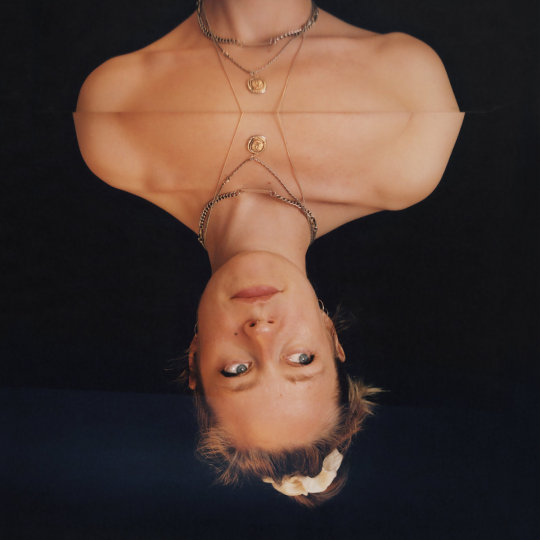
SILY: Is there another hilarious story behind this album’s cover art?
ABS: Not really. When I spoke to Katie [Silvester], the photographer, and Sophie [Louise Hurley-Walker], the Art Director and Designer, I had all these different things I collected over the years that had a sense of flux in them anyway. The duality in the cover image was very important to me. We did it by playing with a mirror. The photograph is upside-down, which was important to me, because it feels slightly uncanny. The figure on the back, the creature outfit, you can’t even see an inch of skin. On the front cover, I might as well be naked. There’s a duality across the whole record for me, that feels so good and so cohesive and expressed in such a better way I could do on my own. There is a bum in my pictures, but it’s not on the front cover this time.
SILY: How are you playing these songs live?
ABS: Either with a band or solo, with a guitar. Some don’t work because they were never played on a guitar, like “in|FLUX”, which wasn’t written on a guitar.
SILY: Do you find it a seamless process to build up the songs from the guitar to a full band?
ABS: Yes? No? It’s a lot easier than if it was on the clarinet or the flugelhorn or something. You have the basic structure, the rhythm or main instrument. But a lot of the stuff did just have bass and drums on it, and the rest of the stuff is synths and analog machines. It gets to a point where it’s about paring down stuff and testing stuff out in the rehearsal room and seeing what works. I don’t feel entirely weathered to making stuff sound like it does on the record, even though I used to hate that when I was a teenager going to gigs. It’s not the same anymore. We have so many tools at our fingertips, it’s not the most feasible thing to make it sound exactly like it does on record, and it’s not the most interesting, either.
SILY: I used to be the same way, and these days, when I hear a band where it sounds just like the record, I think, “Why did I even come?” It’s like they just pressed play.
ABS: Exactly. And I want my band to have fun. I don’t want it to sound like they’re just pressing buttons, I want them to properly play their instruments.
SILY: Are you the type of songwriter who is always writing? Anything in the short or long-term coming up?
ABS: I am absolutely the opposite of a songwriter who’s always writing. I write for the equivalent of two months of the year. I used to feel ashamed about that and thought I was really lazy, but now I realize I’m not not writing in those 10 months, I’m just collating. It helps the process of writing go really fast, because I have everything squared away.
I have a skeleton idea for the next album, which I had before I started recording in|FLUX. I really should have worked more on that. It’s gonna be completely different again. I’ll make it completely hard to play live.
SILY: It’s always cool to hear the evolution from debut album to EP to second album, artists that grow without moving away from what makes them, them. Do you think about that at all when deciding what to do next?
ABS: I wouldn’t say I do. I definitely felt quite nervous putting in|FLUX out. People who had been real champions of [my previous work,] I thought, “They’re gonna fucking hate it.” It’s the same thing as being a content creator or being on social media. I’m not interested in rehashing the same thing over and over again. It doesn’t bring me any joy. I like learning and expanding and testing myself. Even when I think I’m being lazy, I’m constantly testing myself. For me, I want to be able to express the ideas I have for these albums audibly. I don’t feel like the personality of in|FLUX, which I knew before I even started recording, lended itself to the same stuff A Common Turn did, and my next one, I already know doesn’t have the same aural personality as the others do. It’s quite exciting.
SILY: Any plans to come to the U.S. for a tour?
ABS: I wish. I really, really want to. Fingers crossed.
SILY: Anything you’ve been listening to, watching, or reading lately?
ABS: The Madison Cunningham record absolutely fucks me up. I went to see her last night, and she exploded my brain into tiny pieces. I’m so inspired and amazed by her. She’s absolutely unbelievable.
I’ve basically just been watching RuPaul’s Drag Race All Stars since I finished Schitt’s Creek.
Reading-wise, I just finished Madeline Miller’s The Song of Achilles. I read Anne Bronte’s The Tenant of Wildfell Hall. I love winter for the hibernation and the reading and watching TV. It’s a good time to ask me this question.
youtube
#interviews#anna b savage#city slang#bodega social#strange brew#the deer's head#whelan's#kino Šiška#ancienne belgique#in|flux#radiohead#thom yorke#jeff buckley#a common turn#these dreams ep#tunng#mike lindsay#simon morley#lump#joni mitchell#john luther adams#the wind in high places#meet the composer#katie silvester#sophie louise hurley-walker#madison cunningham#rupaul's drag race all stars#schitt's creek#madeline miller#the song of achilles
4 notes
·
View notes
Text
John Maus in Kino Šiška, Ljubljana, Slovenia, October 29th 2024
0 notes
Text

Birthplace of Valentin Vodnik in Zgornja Šiška, Ljubljana, Slovenija
1 note
·
View note
Text
Rambo Amadeus in Kino Šiška
Rambo Amadeus je ekstravaganten balkanski izvajalec in z veseljem obiščem njegov koncert, 2015 Cvetličarno in 2019 Orto bar. Na tokratni turneji gre za poklon samemu sebi z Organic triom, tokrat v Kinu Šiška (vstopnice 25 €). Ponavadi sem šel z Dinom, tokrat pa z Andrejo in Katko. V Kino Šiška sem se pripeljal z avtom, a nisem našel parkirnega mesta, zato sem ga parkiral v coni za pešce. Dobil…

View On WordPress
0 notes
Text

Šiška!!!!!!!
515 notes
·
View notes
Text
Joker Out x I Feel Slovenia: Location guide

Interested about the locations depicted in the 'I Feel Slovenia' reel? Check them all out here! 👇
Slovenian Philharmonic (Slovenska filharmonija)
It is the white building in the background, right behind Nace. Check out its history here. And the website.

Ljubljana City Museum (Mestni muzej Ljubljana)
Kris is standing in the first room of the City Museum. That room is a display of the people of Ljubljana, both famous and everyday residents. Right now there is a temporary exhibition about the LGBT movement in Ljubljana called Spaces of Movement. Check out their website. Tomaž Mihelič's dress from when Sestre were at Eurovision is in it.


Ljubljana's Central Farmer's Market (Centralna tržnica)
Jure is at Ljubljana's Central Farmer's Market which is a UNESCO World Heritage Site. Check out the Wikipedia page.




Tivoli Park
This is the largest park in Ljubljana. Check out all the beautiful things you can see in this park here. Nace is here with Pino.


Bojan and Kris' street shot.
Bojan is riding past the high school for music and ballet (srednja glasbena in baletna šola), located next to Križanke. The white obelisk you see in Kris' shot is Napoleonov spomenik, a monument built for Napoleon in 1929.


Jan's shots
Jan is visiting the record store SpinVinyl, next to the Ljubljanica river, near the Café Romeo.


Jan is at Kino Šiška, which houses the Centre for Urban Culture and which doubles as a concert hall. Check out its story here.


Tabor's Court (Športno društvo Tabor)
Bojan is playing basketball at Tabor's Court.


From there you can spot also the church from Katrina's music video!

Ring making at the Rog Centre (Center Rog)
The boys are at Rog Centre, which is a production space where you can create things with your hands. There they organise different workshops for children and adults alike! It was controversial upon its opening due to the removal of a previous artistic space, and saw several protests. Check out their info page and their programme page.


#joker out#jokeroutsubs#bojan cvjetićanin#bojan cvjeticanin#jan peteh#nace jordan#kris guštin#kris gustin#jure macek#jure maček#slovenian culture#i feel slovenia#ifeelslovenia#jos: masterpost
75 notes
·
View notes
Text


Šiška Open: Špil Liga X, 15/09/23
📸: Marce Obal
37 notes
·
View notes
Text
youtube
youtube
jan with drone society at kino šiška, 2019
21 notes
·
View notes
Text
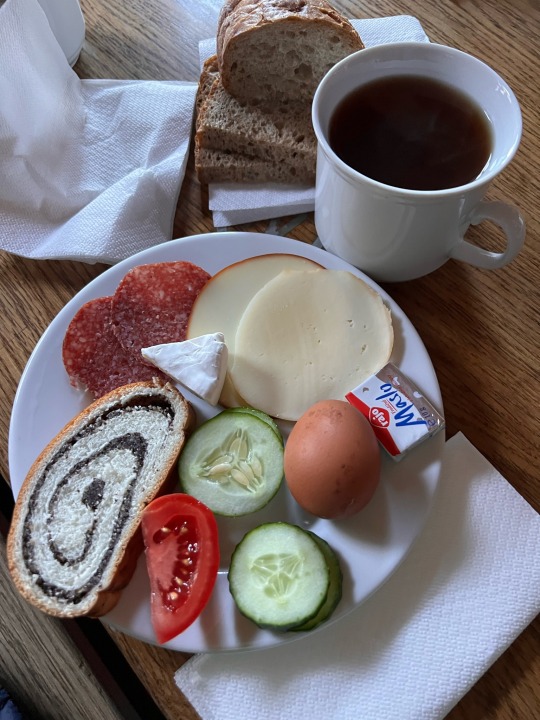
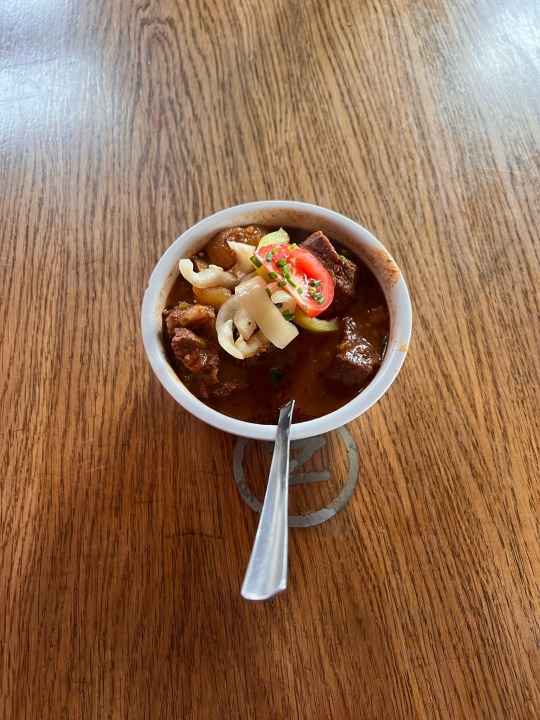
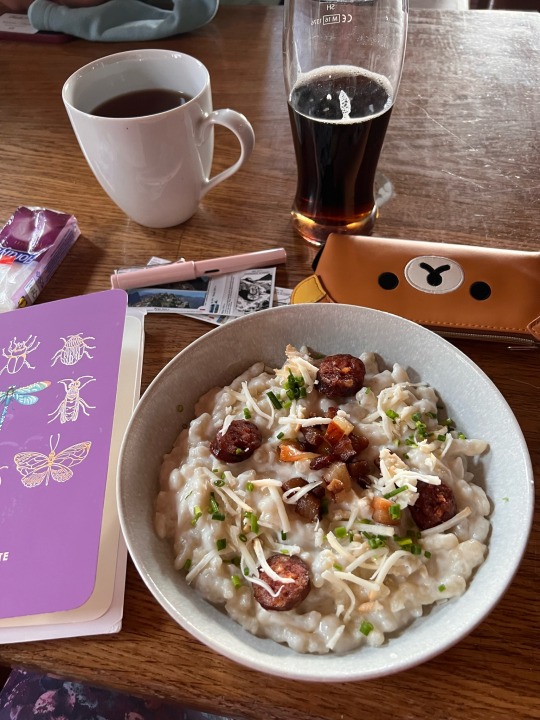

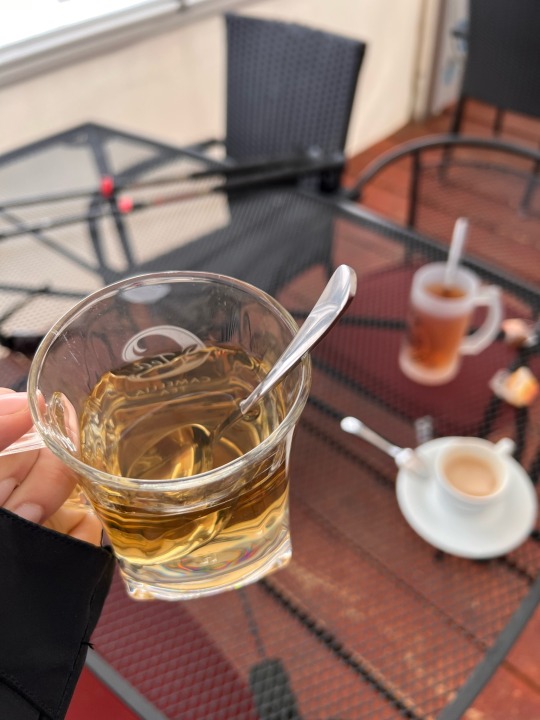

Slovak mountain hut food: a collection
1. Chatárske raňajky (A mountaineer’s breakfast - Chata pod Rysmi)
2. Guláš (Goulash - Chata pod Rysmi)
3. Bryndzové halušky s klobásou a slaninou (Potato gnocci with fresh sheep cheese, sausage and selo bacon - Chata pod Rysmi)
4. Šúľance s makom (Potato dumplings with ground poppy seeds amd melted butter - Chata pod Soliskom)
5. Grog (Grog - Energy Bar Chopok)
6. Espresso a šiška s džemom (Espresso and jam sufganiyot - Chata Ponorka Martinské Hole).
ID in alt text.
#slovakia#slovak food#mountains#hiking#mountain food#mountain hut#food#outdoors#food tw#vacuumdecay oc#a.#hygge#slow living#central europe#slavic#slavic stuff i guess
72 notes
·
View notes
Text
Godspeed you! Black Emperor @ Kino šiška
25th of April 2024
Second time I saw this legendary group and this time their setlist was even better than the last time. I went with my colleagues from the radio station because we were covering it for an online review and when we came to the venue I was surprised to see my younger bro and his gf who also attended the same concert. It was a fun night and this group still got it (plus THE VISUALS UGHHHH) but I remember being stressed over some assignments for uni so I was kinda not able to relax completely.
5 notes
·
View notes
Text
*zrobí fejs* :3 šiška
22 notes
·
View notes
Text








Chris Ziegler - Christine Bonansea Saulut: Yugen project with music by Hugo Paquete.
Christine Bonansea & Chris Ziegler are resident artists of EU dance and technology initiative MODINA (2023-2026) at Tanzhaus NRW. Under the title YUGEN (Japanese = mystery and depth), the two are researching the tension between digital technologies and the intense physicality on stage. In the context of Temps d'Images, they provide insight into this exciting work process. Bonansea & Ziegler experiment with a motion capture suit and develop a pas de deux between a human dancer and a VR avatar in a feedback loop. This looping transmission process is interrupted and altered to find again or anew the physical and individual quality of human expression in the mirror of its artificiality.
The three-year Movement, Digital Intelligence and Interactive Audience (MODINA) project brings together three academic institutions and five dance houses in six European countries. It aims to expand the creative possibilities for contemporary dance performance and enhance the experience for audiences through the use of digital technology - with a focus on exploring artificial intelligence (AI) and audience interaction, on-site and online.
Supported MODINA EU Network on Dance and Technology, Tanzhaus NRW and MIREVI Mixed Reality Lab, FH Düsseldorf, Universität Tallinn (Estland) (Coordinator) Sõltumatu Tantsu Lava (Estland), Hochschule Düsseldorf (Deutschland), Tanzhaus NRW (Deutschland), ITI, IST-ID, Universität von Lissabon (Portugal).
YUGEN - 28. Nov 2024 COFESTIVAL Kino Šiška LJUBJANA
Video: https://vimeo.com/1012709518
Direction: Christine Bonansea, Chris Ziegler
Choreography & Dance: Christine Bonansea
Media & Stage: Chris Ziegler
Music: Hugo Paquete
3D Programming: Ben Fischer, Chris Ziegler
#hugo paquete#new media#composition#sound#music#performance#opera#sound art#dance#media#interactive#motion capture
1 note
·
View note

